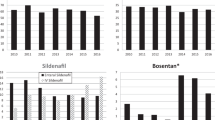Abstract
Objectives:
Congenital chylothorax is a rare disease and prognostic factors are key element in properly informing parents. This study aimed at determining the prenatal factors associated with neonatal survival in a cohort of liveborn infants with congenital chylothorax.
Study design:
Observational monocentric cohort study including all liveborn neonates consecutively admitted for congenital chylothorax.
Results:
Neonatal mortality was 32% (16/50). Prematurity (or birth weight), persistence of hydrops at birth and the absence of thoracoamniotic shunt procedure were significantly associated with mortality, whereas prenatal diagnosis of pleural effusion, side of pleural effusion, hydrops fetalis and amniodrainage were not. In case of prenatal diagnosis of hydrops fetalis, the reversal in utero of hydrops fetalis was significantly associated with survival (P=0.001). In case of thoracoamniotic shunting, the interval between thoracoamniotic shunting intervention and delivery was significantly longer for patients who survived (P=0.03).
Conclusions:
Thoracoamniotic shunting and reversal of hydrops significantly improves survival, whereas prematurity worsened outcome of liveborn infants with congenital chylothorax. Our data also suggest that the interval between thoracoamniotic shunting and birth appears to be crucial; the longer the interval, the more likely is the reversal of antenatal hydrops and neonatal survival.
This is a preview of subscription content, access via your institution
Access options
Subscribe to this journal
Receive 12 print issues and online access
$259.00 per year
only $21.58 per issue
Buy this article
- Purchase on Springer Link
- Instant access to full article PDF
Prices may be subject to local taxes which are calculated during checkout

Similar content being viewed by others
References
Attar MA, Donn SM . Congenital chylothorax. Semin Fetal Neonat Med 2017; 22 (4): 234–239.
Bialkowski A, Poets CF, Franz AR . Congenital chylothorax: a prospective nationwide epidemiological study in Germany. Arch Dis Child Fetal Neonat Ed 2015; 100 (2): F169–F172.
Tutor JD . Chylothorax in infants and children. Pediatrics 2014; 133 (4): 722–733.
Das A, Shah PS . Octreotide for the treatment of chylothorax in neonates. The Cochrane Database Syst Rev 2010; (9): CD006388. (doi: 10.1002/14651858.CD006388.pub2).
Deurloo KL, Devlieger R, Lopriore E, Klumper FJ, Oepkes D . Isolated fetal hydrothorax with hydrops: a systematic review of prenatal treatment options. Prenat Diagn 2007; 27 (10): 893–899.
Caserio S, Gallego C, Martin P, Moral MT, Pallas CR, Galindo A . Congenital chylothorax: from foetal life to adolescence. Acta Paediatr 2010; 99 (10): 1571–1577.
Church JT, Antunez AG, Dean A, Matusko N, Deatrick KB, Attar MA et al. Evidence-based management of chylothorax in infants. J Pediatr Surg 2017; 52 (6): 907–912.
Salomon LJ, Duyme M, Crequat J, Brodaty G, Talmant C, Fries N et al. French fetal biometry: reference equations and comparison with other charts. Ultrasound Obstet Gynecol 2006; 28 (2): 193–198.
Effect of corticosteroids for fetal maturation on perinatal outcomes. NIH Consensus Development Panel on the effect of corticosteroids for fetal maturation on perinatal outcomes. JAMA 1995; 273 (5): 413–418.
Norton ME, Chauhan SP, Dashe JS . Society for maternal-fetal medicine (SMFM) clinical guideline #7: nonimmune hydrops fetalis. Am J Obstet Gynecol 2015; 212 (2): 127–139.
Picone O, Benachi A, Mandelbrot L, Ruano R, Dumez Y, Dommergues M . Thoracoamniotic shunting for fetal pleural effusions with hydrops. Am J Obstet Gynecol 2004; 191 (6): 2047–2050.
Moise KJ Jr . Toward consistent terminology: assessment and reporting of amniotic fluid volume. Semin Perinatol 2013; 37 (5): 370–374.
Yinon Y, Grisaru-Granovsky S, Chaddha V, Windrim R, Seaward PG, Kelly EN et al. Perinatal outcome following fetal chest shunt insertion for pleural effusion. Ultrasound Obstet Gynecol 2010; 36 (1): 58–64.
Abrams ME, Meredith KS, Kinnard P, Clark RH . Hydrops fetalis: a retrospective review of cases reported to a large national database and identification of risk factors associated with death. Pediatrics 2007; 120 (1): 84–89.
Diomande D, Husseini K, Meau-Petit V, Dupont C, Picone O, Boileau P . Early-onset pneumothorax indicates poor outcome in newborns with congenital idiopathic chylothorax. Arch Dis Child Fetal Neonat Ed 2008; 93 (4): F327–F328.
Huang HR, Tsay PK, Chiang MC, Lien R, Chou YH . Prognostic factors and clinical features in liveborn neonates with hydrops fetalis. Am J Perinatol 2007; 24 (1): 33–38.
Pellegrinelli JM, Kohler A, Kohler M, Weingertner AS, Favre R . Prenatal management and thoracoamniotic shunting in primary fetal pleural effusions: a single centre experience. Prenat Diagn 2012; 32 (5): 467–471.
Knox EM, Kilby MD, Martin WL, Khan KS . In-utero pulmonary drainage in the management of primary hydrothorax and congenital cystic lung lesion: a systematic review. Ultrasound Obstetr Gynecol 2006; 28 (5): 726–734.
Tsukimori K, Nakanami N, Fukushima K, Yoshimura T, Hikino S, Nakano H . Pleural fluid/serum immunoglobulin ratio is a diagnostic marker for congenital chylothorax in utero. J Perinat Med 2006; 34 (4): 313–317.
Acknowledgements
This study was supported by the ‘Association pour la Recherche et la Formation En Neonatologie (ARFEN)’, which provides technical assistance.
Author contributions
MD, AG and AL drafted the manuscript. They designed and participated in the study. They had access to all of the primary data and performed the statistical analyses. They participated in the review, revision and approval of the final manuscript. FL, JS, LSB, MN, ZA, NKD, EK, JFM and YV participated to the study and had access to all of the primary data. They critically revised the manuscript and provided significant scientific input. They participated in the review, revision and approval of the final manuscript.
Author information
Authors and Affiliations
Corresponding author
Ethics declarations
Competing interests
The authors declare no conflict of interest.
Additional information
Supplementary Information accompanies the paper on the Journal of Perinatology website
Supplementary information
Rights and permissions
About this article
Cite this article
Dorsi, M., Giuseppi, A., Lesage, F. et al. Prenatal factors associated with neonatal survival of infants with congenital chylothorax. J Perinatol 38, 31–34 (2018). https://doi.org/10.1038/jp.2017.150
Received:
Revised:
Accepted:
Published:
Issue Date:
DOI: https://doi.org/10.1038/jp.2017.150
This article is cited by
-
Neonatal Lymphatic Flow Disorder
Indian Journal of Pediatrics (2024)
-
Congenital Chylothorax with Lymphatic Malformation and Successful Antenatal and Postnatal Management
Indian Pediatrics (2020)


